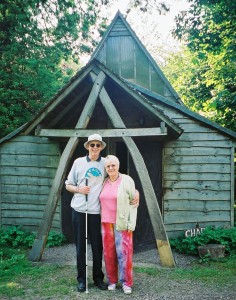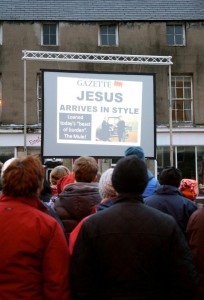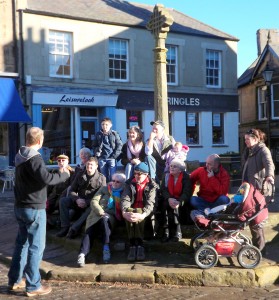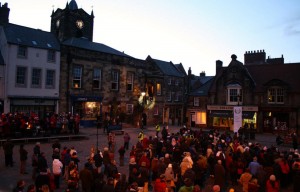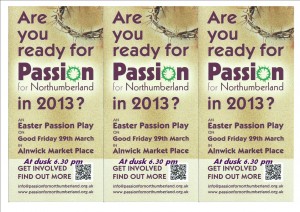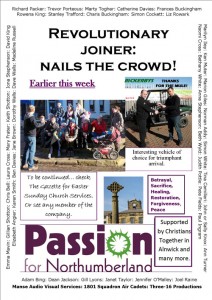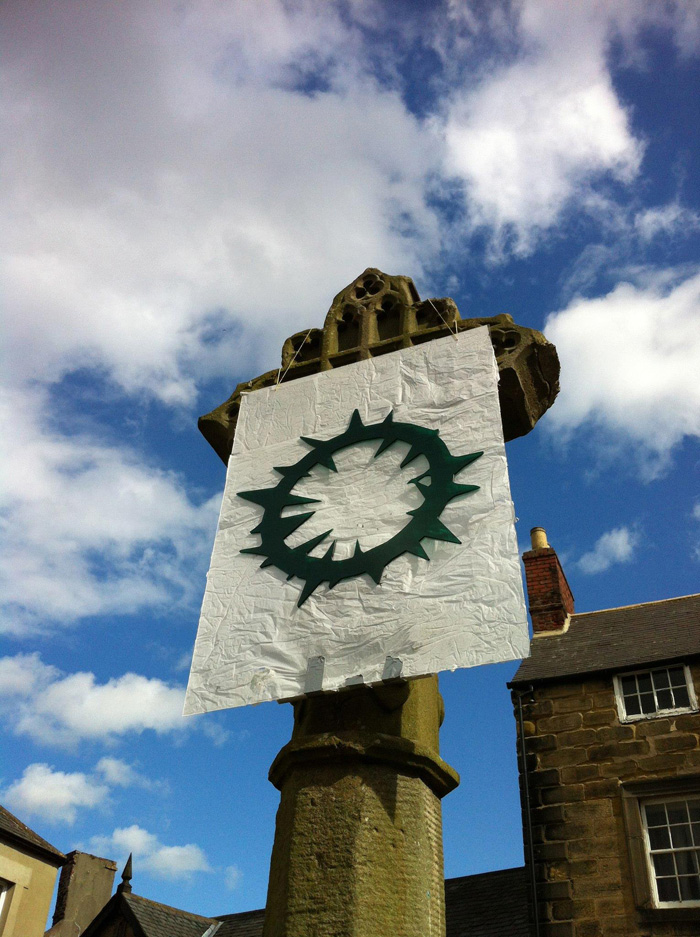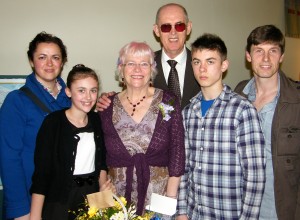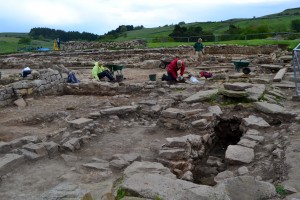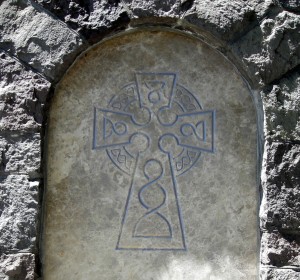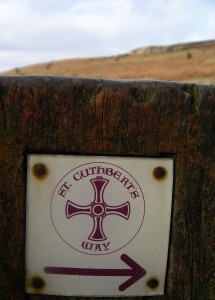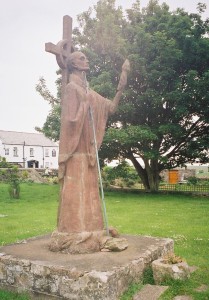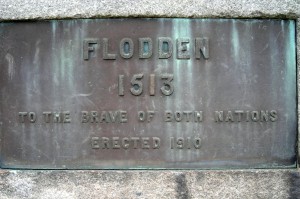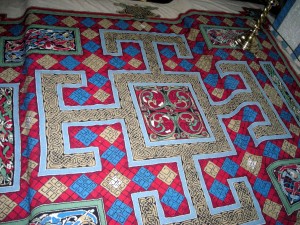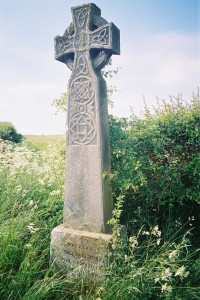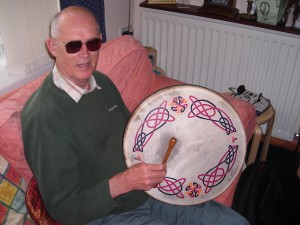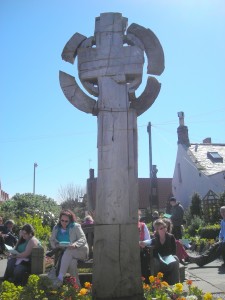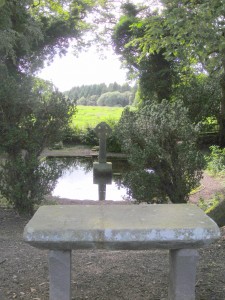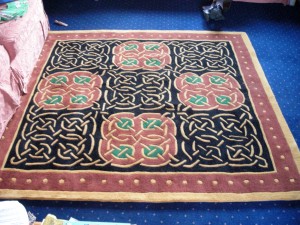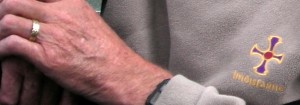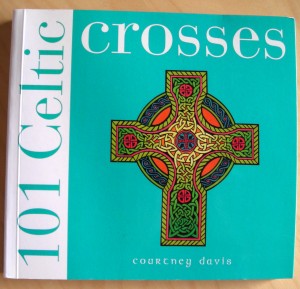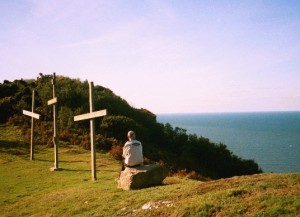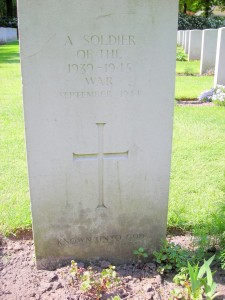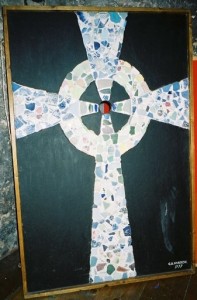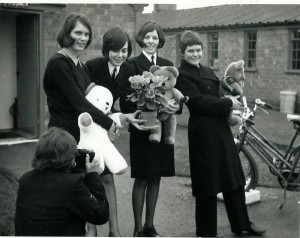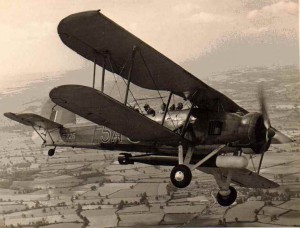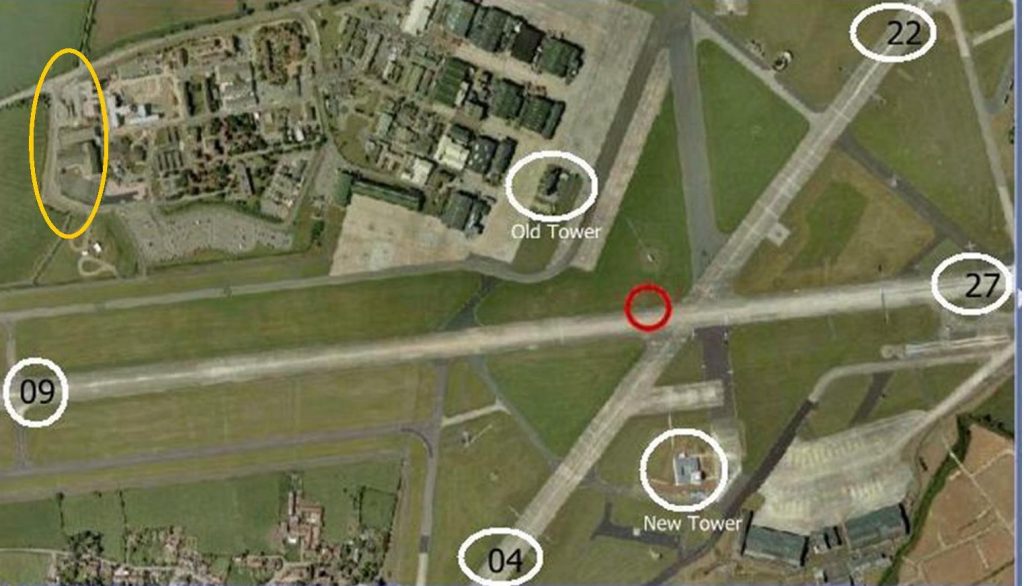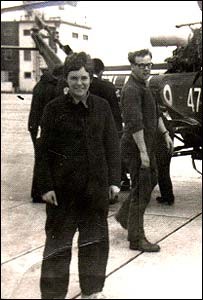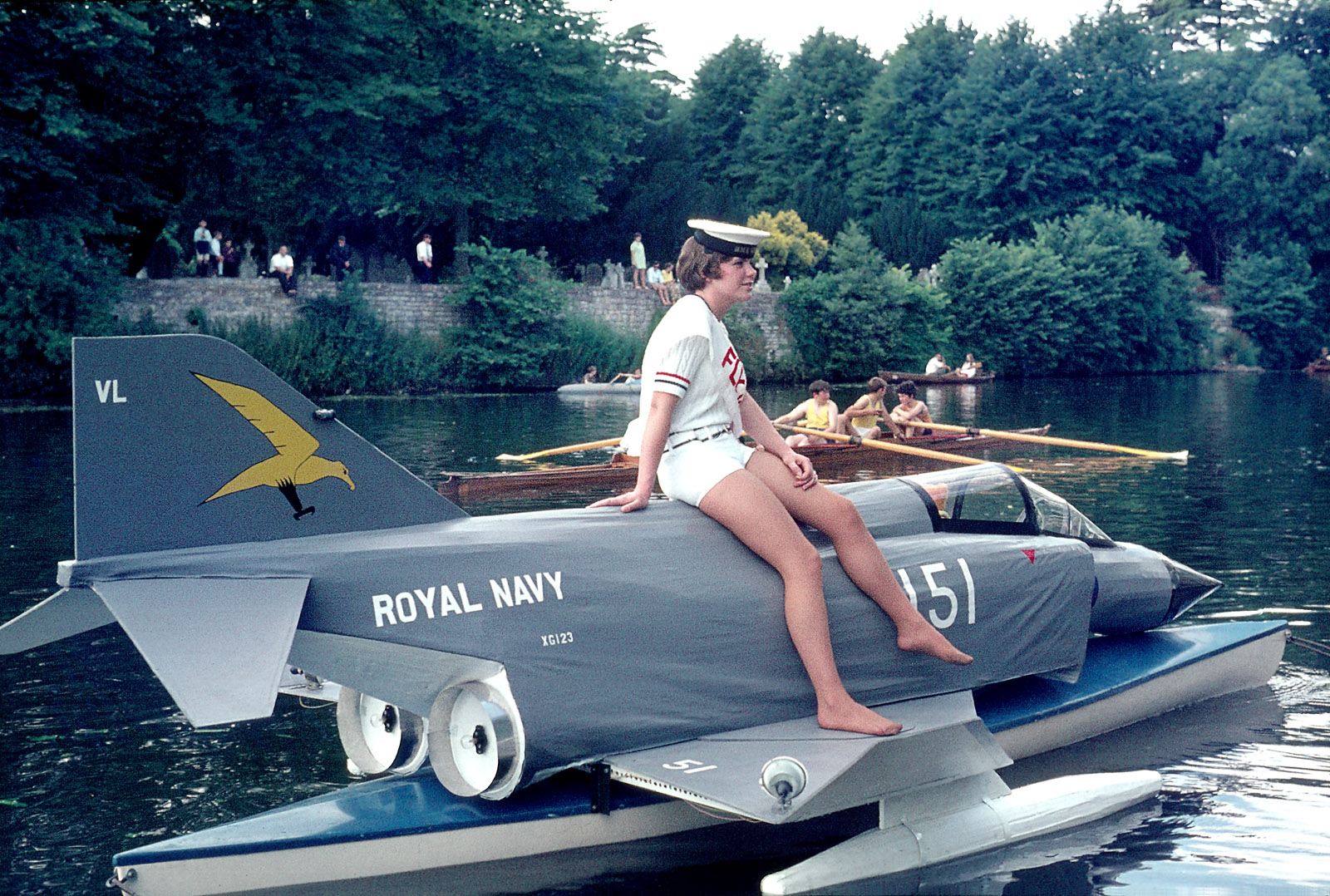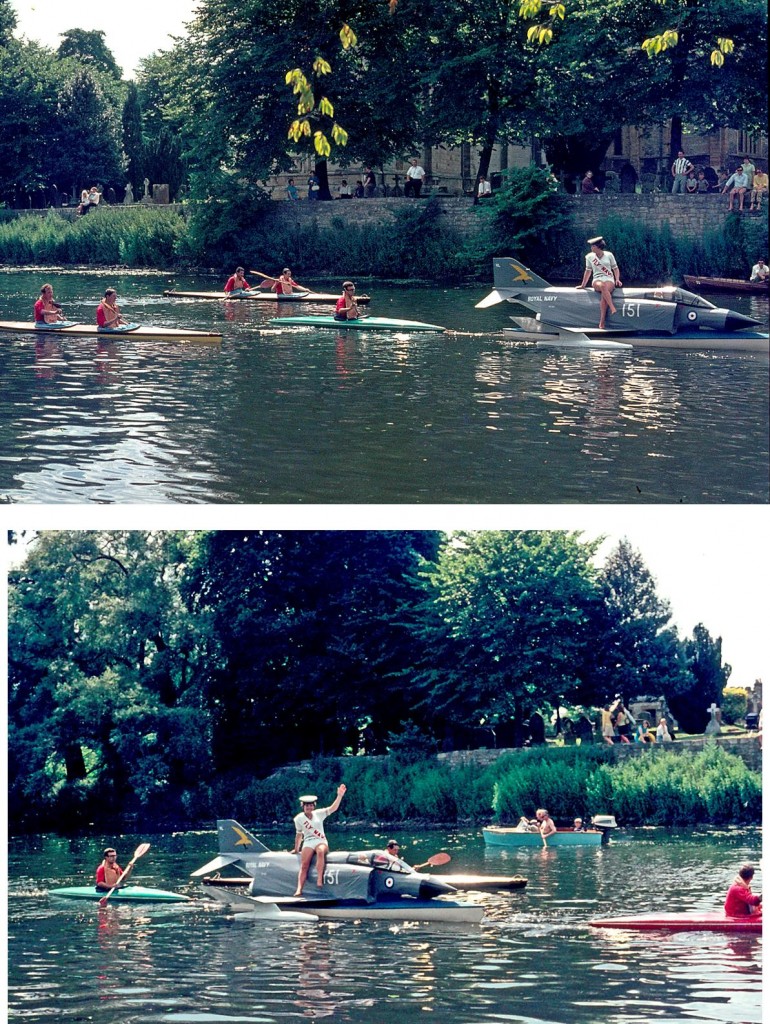Before I met Rob I had the usual misconceptions about blind people, since I have known him I have heard many people asking him (or me) the same questions that I used to ask. A common one is that blind people can recognise a person by feeling their face – sorry, great for Hollywood, but not true!
So we decided that I should write out the most common “myths” and Rob would answer them, by the way, Rob is now totally blind.
Twelve myths about blindness
1. Blind people have no sight at all
In the United Kingdom, there are about one million people who are known to suffer degrees of blindness. Blindness is often described as visual impairment. Most are partially sighted, but about 200,000 have such a severe problem that they are registerably blind. Among those who are registered blind, only 18% have total blindness. Even most of these can tell the difference between light and dark.
The other 82% have some degree of remaining sight. Some see only a vague blur; others as if they are looking through frosted glass. Another group have no central vision and there are those who see as if looking down a long narrow tunnel. It is possible for some blind people to have enough sight to read a computer screen but not enough to safely cross a road.
2. Blind people have improved hearing or touch
There is no truth in the widely held belief, that blind or partially sighted people are somehow endowed with a better sense of hearing, touch or scent. They have similar senses to everyone else, except that they have serious sight loss.Many endure further difficulties due to hearing loss, poor touch, or inadequate scent or taste. Especially if they are older in years.
Sadly, there is no acquired ‘sixth sense’ which helps visually impaired people overcome their sight loss.
However, many of them have been able to improve their circumstances by learning to become careful listeners or are making the best out of the senses they have retained.
3. Braille is used by most blind people
Out of the million known visually impaired people in the United Kingdom, there are about 13,000 fluent Braille readers. Many others use Braille in a limited way, to label items or to make simple notes. To be able to read Braille, it is necessary to have good touch sensitivity. Not everyone has the sensitive nerve ends to do this, especially if they are older in years. Braille is vital for people who are both blind and deaf.
A small number of older people use Moon instead of Braille. Moon is simpler to learn and its tactile curves and lines are easier to feel than Braille dots.
4. Blind people cannot use computers
Many blind and partially sighted people use computers, smart phones or tablets. Either at work, educational establishments and in the home. Some use large print or modified colour displays. Others use audio text readers and a further group has electronic Braille pads. Their specialist software enables them to use standard office programs, browse the Internet and communicate by Facebook, Twitter, email, text messages and phone calls.
Smart phones provide GPS pavement navigation, talking books, text recognition tools which read printed paper and camera apps which recognise product labels, colours and the values of money. On the whole, visually impaired people are just as able at using modern technology as sighted folk.
5. Guide dogs are used by all blind people
There are around 5,000 guide dog owners in the United Kingdom and there are up to 200,000 people who are registered blind. Whilst these valuable dogs are able to considerably improve the independence of their owners, they are not always the right solution for everyone. Looking after a trained guide dog takes extra time and effort and not everyone has the ability or inclination to do this.
6. Guide dogs can take blind people anywhere
A guide dog works within simple limitations. Generally speaking, it is only useful if its visually impaired owner has a good mental map of each journey. Established routes are worked out in advance with the help of guide dog professionals. A guide dog has been trained to safely lead someone along a length of pavement and to sit down at the next kerb. It will also stop if there is a hole in the pavement or if there is an obstacle on the path. In each case, it will await further instructions from its handler; a dog cannot judge the speed of approaching traffic, though its owner can use it to cross at a pedestrian crossing.
7. A blind person will recognise your voice
Some people have very distinctive voices, but most do not. You will have noticed this when using a telephone.
It is more difficult to recognise people by voice when walking outside or in a busy room. Blind people are no different from everyone else; except that they are unable to see that someone is speaking to them.
When you meet a visually impaired person, introduce yourself by name. If you know their name use it, then they will know that you are speaking to them and not someone else. This is particularly important if there are other people about. To further attract their attention, gently touch their upper arm with your hand. When you are leaving, say you are going away. Nobody likes to find that they have been speaking to an empty space!
8. All with limited vision can use large-print books
Large print is a great help to many people who have limited sight. But some visually impaired people may be able to find their way around a room quite well, but not be able to read large print. They may have lost a major part of their central vision or find difficulty in dealing with the glare of white paper. If this is the case, they may appreciate having important items read to them or recorded on to a memory stick. If they use a computer or other devices, then send them the information by email. Talking books are very popular with people with poor sight. They are usually read by professionals and there is a wide range of subjects to choose from. Local libraries, the RNIB, Audible, Amazon and Kindle are among many suppliers.
9. Blind people live dangerous lives
This is only partly true. The biggest danger is from the unconsidered actions of sighted people. These include obstacles being left on pathways, like bicycles and badly placed shop signs. Also, vehicles which park in front of pedestrian crossing areas and dropped curbs or fail to observe speed limits.
So called “Shared Spaces” are particularly dangerous for blind people, and for visually impaired people generally, many older people also find it impossible to safely use these kerb-less places.
Most visually impaired people use a mixture of common sense and mobility training to improve their independence in the community and at home. Blind and partially sighted people participate in a wide range of sport and recreation, and have a good record of safety.
10. Blind people cannot live on their own
Many visually impaired people live on their own, either by choice or circumstances. Some of them have full time jobs or have children of their own. They may receive some sighted help, but will do most things themselves. There are a range of items to assist them in safely preparing food and doing their household chores or gardens. Most major supermarkets have staff who are able to help blind and partially sighted people with their shopping. And many shop on the Internet
11. Blind people do not enjoy TV or theatre
Not true. Some blind and partially sighted people can see quite a bit of a television picture. It depends on the usefulness of any of their remaining sight. Those who cannot see the picture at all, often enjoy the words and sound on quiz programmes, musicals and wildlife features. Modern televisions have an option to switch on Audio Description for many programmes and DVD films. You can find this in the Sound part of your TV’s Menu. Audio description runs in the background of the main soundtrack and is a great help in explaining what is happening on the screen without being too intrusive. Blind people also follow TV programmes on their computers, tablets and mobile phones, using their talking screen readers to select and review programmes available on the Internet. The latest “smart TV’s” have similar options.
Theatre is a social experience as well as a show. Looking forward to going out with friends is often part of the enjoyment. As with television, the spoken and sung words provide a lot of information and many theatres and cinemas offer audio description for visually impaired people. There are similar helps at stately homes, museums, art galleries and zoos.
12. All blind people are super-saints
Really! Sorry, visually impaired people do not have a special gift of patience and tolerance. Nor are they exceptionally religious. Like anyone else, there are times when they feel depressed, frightened, get angry or frustrated with their circumstances. Some struggle with deep spiritual questions, relating to their blindness or their self-worth.
Quite a few trust in God and derive much comfort from their faith. Even so, they would not claim to be super-saints, but just ordinary people trying to get the best out of life. If you would like to read how Rob’s own spiritual journey has helped him in his blindness and all areas of his life, it is here below: ……………………………………………………………………………………………………………………………..
Rob’s personal journey
I started to lose my sight as a teenager and it slowly deteriorated until, at the age of 65, I became totally blind. I have had lots of training to help me cope with my sight loss and access to resources and equipment. On top of this, I have needed to dig deep into my spiritual needs to cope with self-esteem, life expectation, hope for the future and many other issues. I decided to explore Christian spirituality and started to attend my local church. The congregation was very friendly and supportive, and I learned a lot about God’s love for me and how he sent Jesus to give us hope for this world and the next one to come.
When I started to go to church my life was in a mess. My sight had deteriorated badly and, although I still had some useful sight, I was added onto the blind register. I lost my job; my marriage had fallen apart and I was living on benefit for the first time in my life. There were things that I didn’t like about myself and I was starting to clutch on anything which might give me some comfort. I still wasn’t sure that God was real, but someone told me that if I put my trust in Jesus it would lift a heavy load off my shoulders. One Sunday morning, after the service was over, I found a quiet place in the church and got on my knees, asking Jesus to come into my life and help me get things sorted. I couldn’t believe it. It was as if my burden of worry and stress was lifted from me and I knew I had done the right thing. I started to believe in God and joined a group to study the Bible.
Being a new Christian I was advised to set a little bit of time each day for reflection, Bible study and prayers. The Torch Trust for the Blind provided me with an audio version of “Every Day with Jesus” with a short Bible verse, some comments and a prayer. I got into the habit of starting my day with this and it challenged and encouraged me in improving my attitude to myself and other people. It also persuaded me to have more faith in God, because he is my loving father in heaven and wants the best for me. I still get daily readings from Torch to help me in my time with God after all those years.
I was soon making some good and supportive friends in the church membership. We had a lot of fun, going out for meals, events and working on social projects. They visited me when I was in trouble and often gave me lifts in their cars to hospital appointments. I learned more from this love in action than reading books and attending talks.
I think that the most difficult thing I had to come to terms with, was learning to use a white cane to get around in public. The technique in itself is simple enough. I just felt that everyone was looking at me with pity in their eyes and my self-esteem hit rock bottom. It got very much worse when people tried to help me, and I confess that I lost my temper on several occasions. One day when I was on a training walk, I clearly heard God speak to me. ‘My rod and my staff will comfort thee.” It cheered me up and I often think about this when I am struggling. My struggle was worth the effort in the end, for my white cane skills are very good and it has helped me navigate myself out of some difficult situations. I don’t hear God’s voice very often, but 20 years ago, when I was beginning to lose the last of my limited sight I clearly did. I was sitting in my garden praying for help for I lived on my own. The words came to me, ‘Have you ever considered getting married again?’ I thought about it and almost ignored it. Who would marry a blind man of my age who had to depend on benefits? Then I remembered that God is full of amazing surprises, so I replied that I was up to this if he found the right person for me.  Within 18 months I was married to Catherine and we are just right for each other. We both help each other through times of difficulty and trust in the same Jesus who God sent to save us. The smiling photo of us at our church has a cross and the words “Hope is here” on it.
Within 18 months I was married to Catherine and we are just right for each other. We both help each other through times of difficulty and trust in the same Jesus who God sent to save us. The smiling photo of us at our church has a cross and the words “Hope is here” on it.
This link will take you to Catherine’s article on Body language and misunderstanding blindness
Due to all the spam we have had to turn off the commenting on this WordPress blog. You can contact us via Catherine Davies van Zoen on Facebook Messenger.

